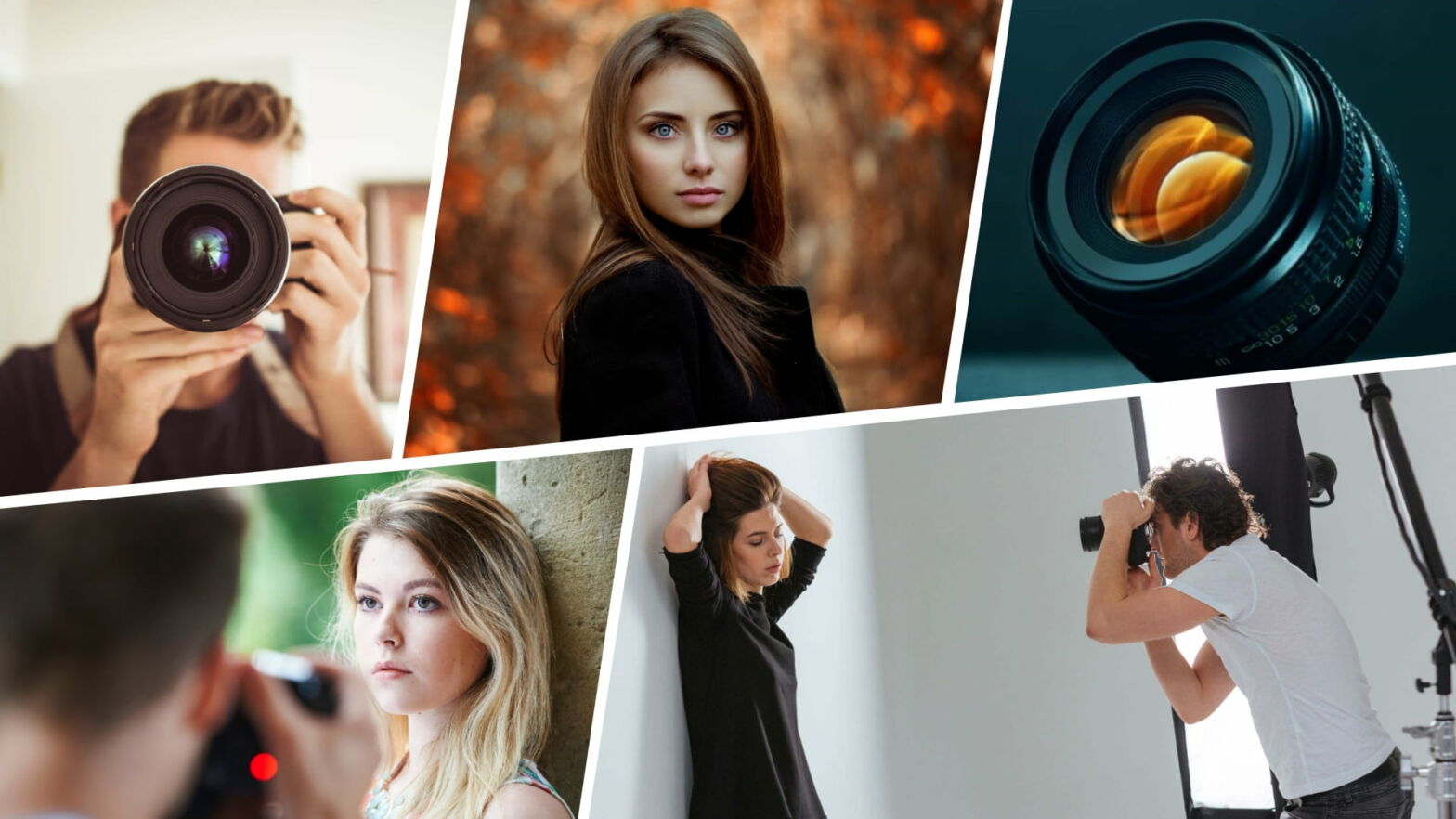What is the best lens for portraits? This is a question that nearly every photographer asks and yet there is no definitive answer – suffice it to say that different camera lenses create different looking photographs. However, some lenses are better suited for portraits than others. We’re going to analyze some different focal length lenses to see which work the best for portrait photography. By the end, you’ll know portrait photography techniques and where to find the best lens for your price range.
Best Type of Lens for Portraits
Things to consider
Before we dive into some specific examples, let’s review the technical details that go into choosing the best camera lens for portraits. In photography, there are two predominant types of lenses: zoom and prime.
Zoom Vs. Prime? Quick Guide on Choosing the Right One
Zoom lenses have variable focal lengths which make them versatile.
Prime lenses have large max apertures, present few structural complications, and are the top choice for many portrait photographers – but they have a fixed focal length.
There are benefits and drawbacks to both zoom lenses and prime lenses. If you’re able to, consider video equipment rental options before purchasing an expensive lens; test out zoom and prime lenses to decide which will work best for your portrait needs.
Also, some lenses are better with certain cameras than others are. For example, APS-C and micro four-thirds cameras have smaller main sensors than full-frame cameras. It’s important to be mindful of the image you hope to achieve before shelling out all that money! For reference: the graphic below shows what differently sized sensors would pick up with the same lens.
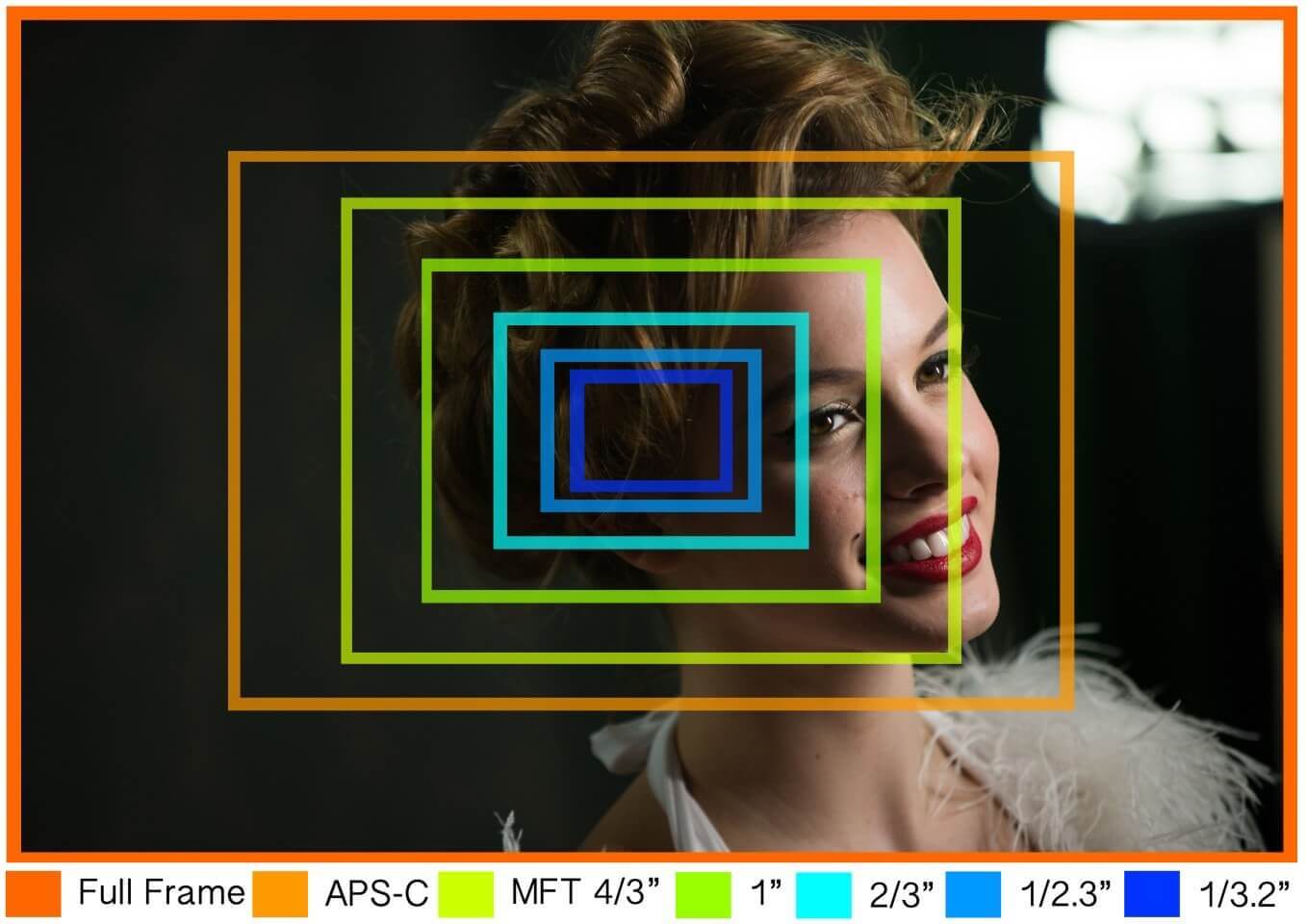
What different-sized sensors – Full Frame, APS-C, MFT, 1-inch, 2/3-inch, 1/2.3-inch, 1/3.2-inch – would have captured if using the same lens to take this photo via New Atlas
We’re going to recommend some popular lenses in the categories of 35mm, 50mm, 85mm, and 70-200mm – but just remember that these are (mostly) angled at full-frame cameras.
Good Portrait Lenses
35mm Lenses
The 35mm lens is typically the widest lens anybody uses for portrait photography. Many photographers would argue that 35mm is too wide for portraits but we thought it would be good to include both ends of the spectrum – wide and telephoto. Since the 35mm lens is so wide, many argue that it’s the best lens for family portraits. This next video from photographer Tommy Kuo looks at how we can capture breathtaking portraits with 35mm lenses.
Perfect Portrait Lenses • Why I Only Use a 35mm Lens for Portraits
Why are 35mm lenses some of the best lenses for portraits? Well, it has to do with field of view. With a wide focal length, you get a big field of view; because of this, you can create compositions that are unique to wide-angle lenses. I think this photo from Kuo’s video explains what I’m trying to get across.
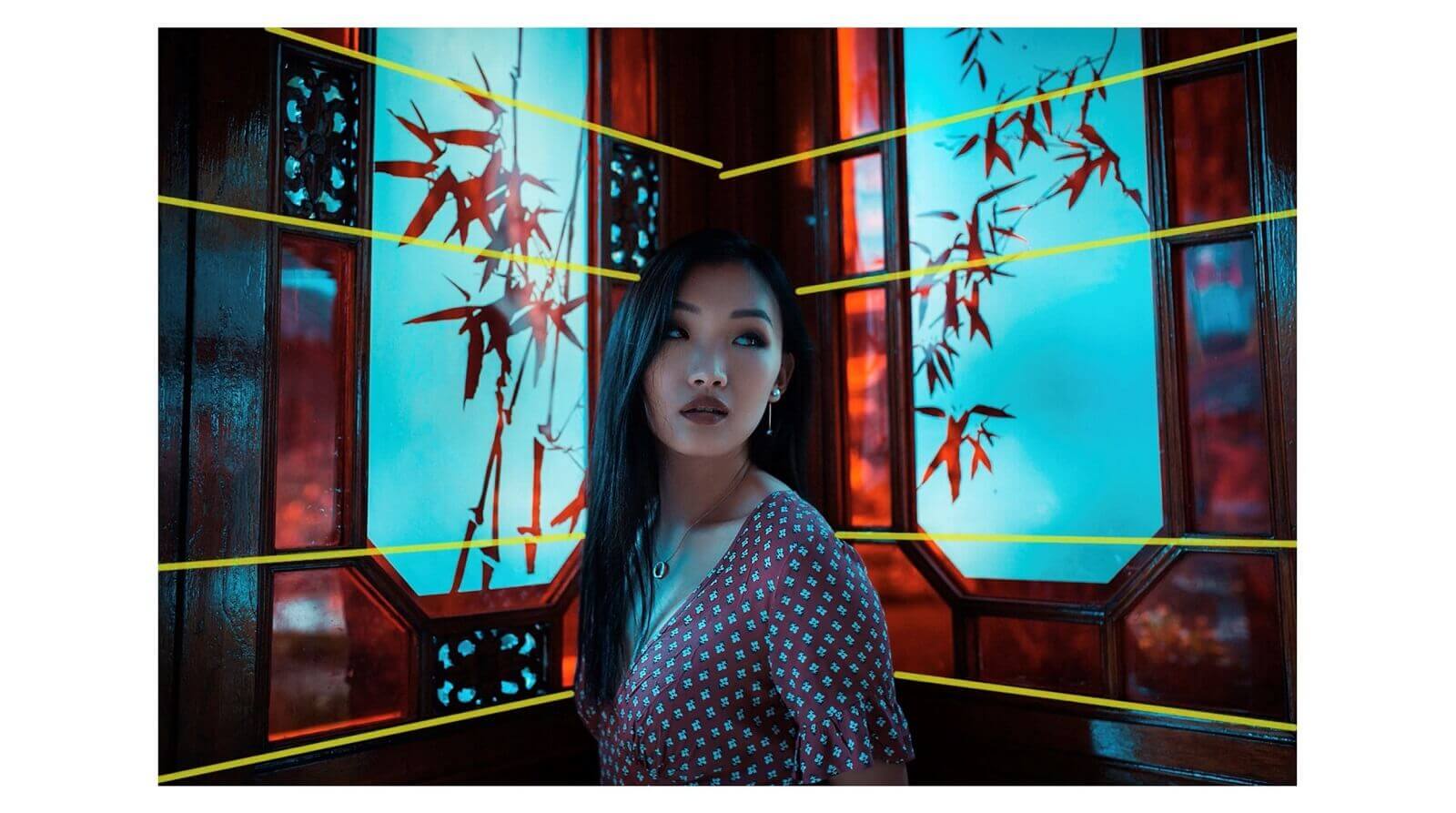
Best Type of Lens for Portraits • Clever Depth of Field in a Portrait by Tommy Kuo
Kuo was able to frame the subject in an enveloping way by shooting this image with a wide-angle lens. Look at how the depth of field guides us to the subject. All in all, it’s very impressive – and only possible with a 35mm lens.
Here are a couple of the best 35mm lenses for portrait photography:
Canon 35mm f/1.4 L USM – Price varies by retailer
- Focal Length & Maximum Aperture: 35mm 1:1.4
- Lens Construction: 11 elements in 9 groups
- Diagonal Angle of View: 63°
- Focus Adjustment: Rear focusing system with USM
- Closest Focusing Distance: 0.3m / 1 ft.
- Filter Size: 72mm
- Max. Diameter x Length, Weight: 3.1 x 3.4, 20.5 oz. / 79.0 x 86.0mm, 580g
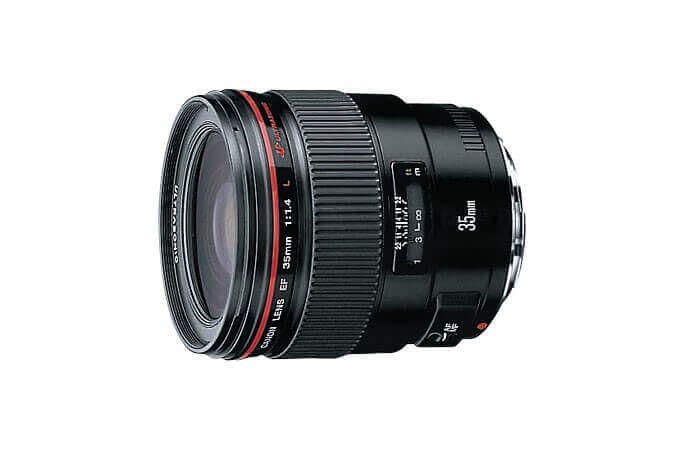
Best Canon Lens for Portraits • Canon 35mm f/1.4L USM
The Canon 35mm f/1.4L USM wide-angle lens consistently ranks atop lists of the best 35mm lenses on the market. But is it good for portrait photography? The short answer is yes… if you’re looking for a 35mm focal length lens.
AF-S DX NIKKOR 35mm f/1.8G – $199.95
- Mount Type: Nikon F-Bayonet
- Focal Length: 35mm
- Maximum Aperture: f/ 1.8
- Minimum Aperture: f/ 22
- Format: DX
- Minimum Angle of View (DX-format): 44°
- Maximum Reproduction Ratio: 0.16x
- Lens Elements: 8
- Lens Groups: 6
- Diaphragm Blades: 7
- Aspherical Elements: 1
- Super Integrated Coating: Yes
- Autofocus: Yes
- AF-S (Silent Wave Motor): Yes
- Minimum Focus Distance: 0.98 ft.
- Focus Mode: Auto, Manual, Manual/Auto
- Filter Size: 52mm
- Accepts Filter Type: Screw-on
- Approx. Dimensions (Diameter x Length): 2.8 in. (70 mm) x 2.1 in. (52.5 mm)
- Approx. Weight: 7 oz. (200 g)
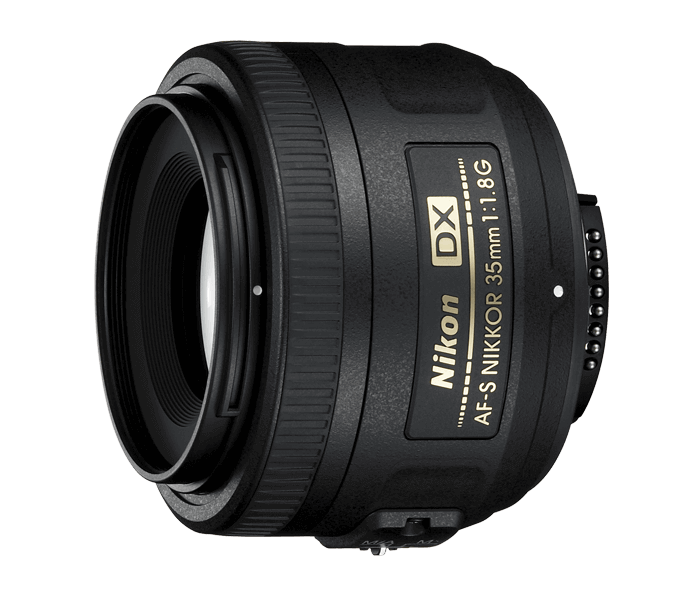
Best Nikon Lens for Portraits • AF-S DX NIKKOR 35mm f/1.8G
This 35mm lens from Nikon is for DX (24x16mm) format sensors. So if you have a smaller Nikon DX main sensor, this lens is a great option. And the price can’t be beat when compared to FX models.
Best Photos Lens for Portraits in Mid Distance
50mm Lenses
The 50mm lens is one of the best lens sizes for portraits. Many portrait photographers praise 50mm lenses for their versatility and it’s not hard to see why – they strike a balanced “middle-area” focal length. This next video from Julia Trotti takes a look at how to use 50mm lenses for portrait photography.
Good Portrait Lenses • Why You Need a 50mm Lens for Portrait Photography
Trotti says 50mm lenses are great for burgeoning photographers because of their versatility. Consider using a 50mm lens at f/1.2 aperture like Trotti says to get a great shallow depth of field perspective. Here’s a quick size comparison from her video that compares 50mm lenses at f/1.4 and f/1.2 apertures.
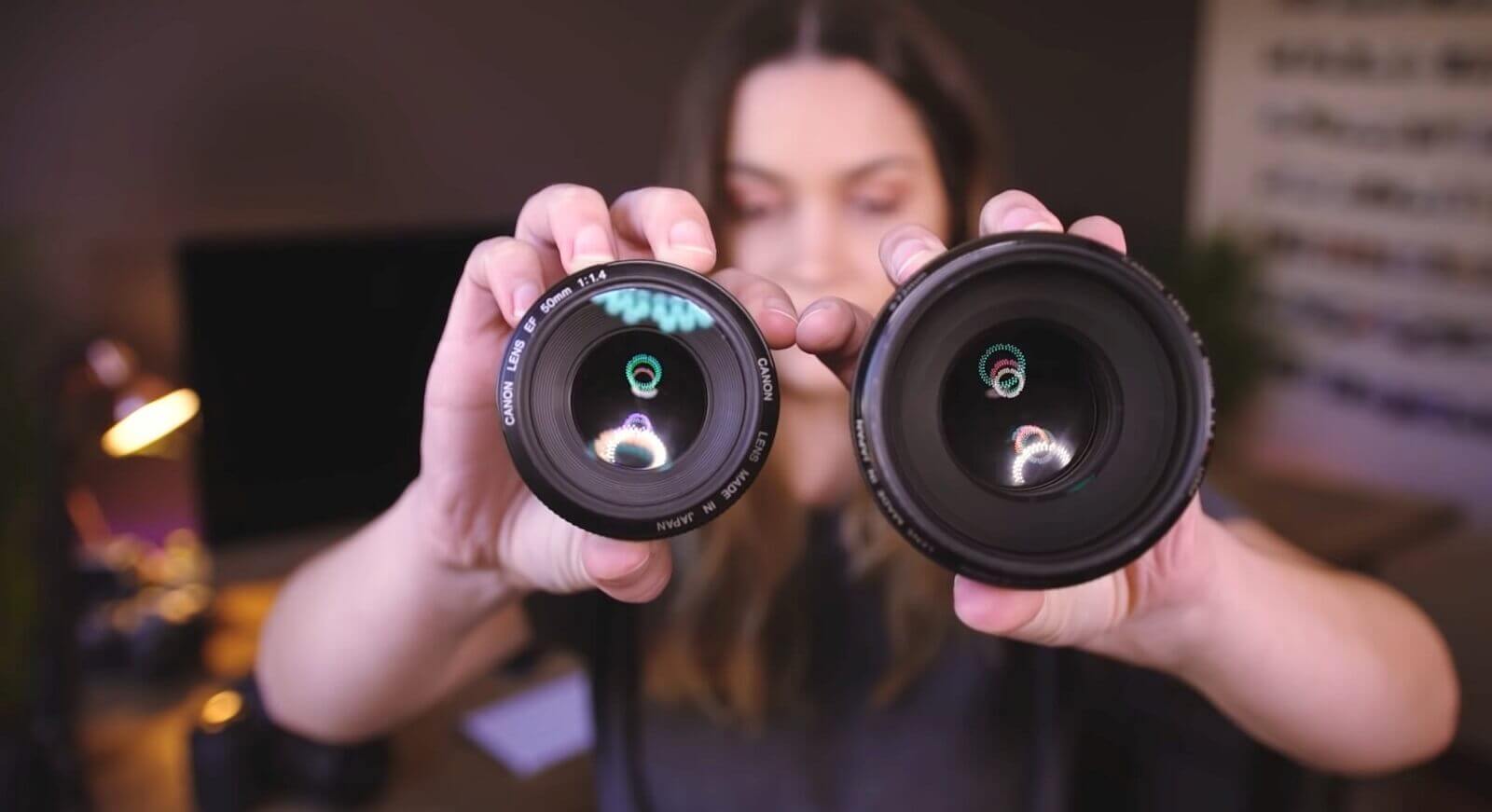
Best Canon Lens for Portraits • 50mm f/1.4 vs. 50mm f/1.2
And here’s a quick reference guide to aperture sizes:
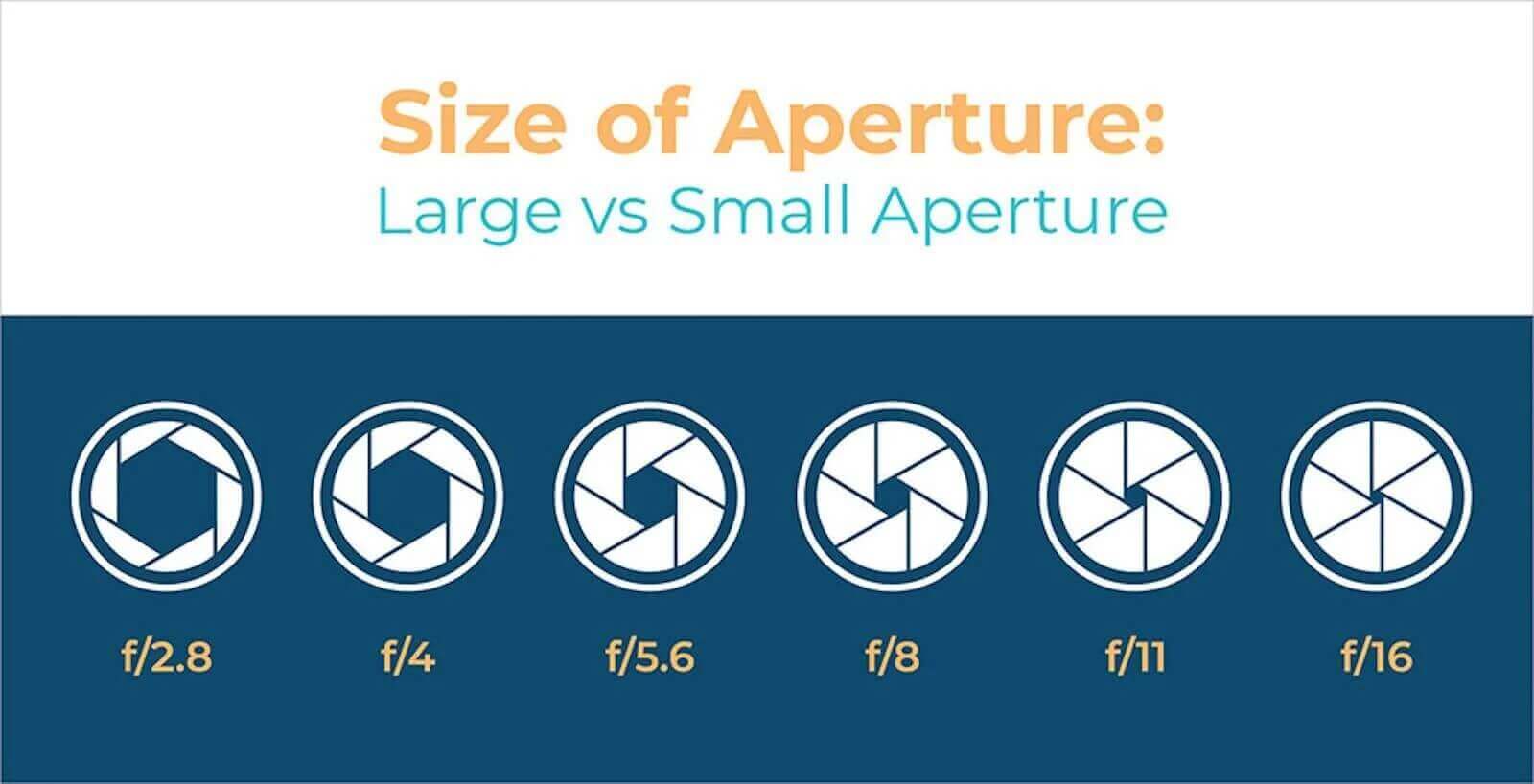
What Size Lens for Portraits • Aperture Sizes Explained
Aperture sizes can be tricky to remember because the aperture size has an inverse relationship with the number – so the smaller the f/number, the larger the aperture.
Here are a couple of popular 50mm lenses for portrait photography:
Canon EF 50mm f/1.2L USM – $1,399.00
- Focal length: 50mm
- Maximum aperture: f/1.2
- Diagonal angle of view: 46°
- Closest focusing distance: 48 ft. / 0.45m
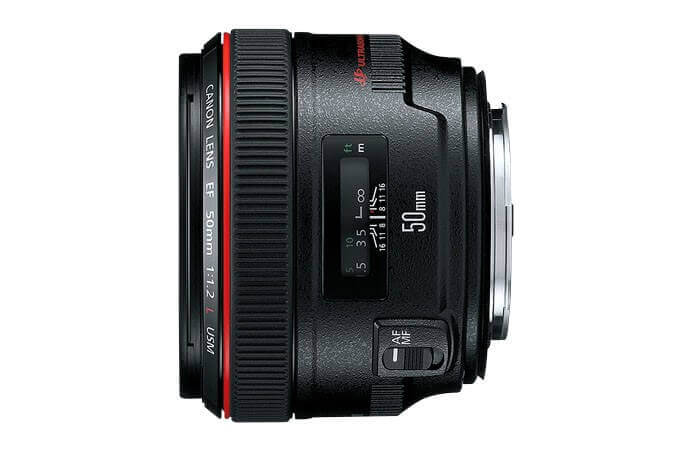
Best Canon Lens for Portraits • EF 50mm f/1.2L USM
The Canon EF 50mm f/1.2L USM lens has an extremely large aperture. As such, you’d be right to expect it comes with a hefty price tag. But if you’re willing to shell out the cash, the Canon 50mm f/1.2L is nearly unrivaled in its price range for its narrow depth of field detail.
Nikon AF-S NIKKOR 50mm f/1.8G Lens – $219.95
- Mount Type: Nikon F-Bayonet
- Focal Length: 50mm
- Maximum Aperture: f/ 1.8
- Minimum Aperture: f/ 16
- Format: FX/35mm
- Maximum Angle of View (DX-format): 31°30'
- Maximum Angle of View (FX-format): 47°
- Maximum Reproduction Ratio: 0.15x
- Lens Elements: 7
- Lens Groups: 6
- Diaphragm Blades: 7
- Aspherical Elements: 1
- Super Integrated Coating: Yes
- Autofocus: Yes
- AF-S (Silent Wave Motor): Yes
- Minimum Focus Distance: 1.48 ft. ( 0.45m)
- Focus Mode: Auto, Manual, Manual/Auto
- Filter Size: 58mm
- Accepts Filter Type: Screw-on
- Approx. Dimensions (Diameter x Length): 2.8 in. (72.1 mm) x 2.1 in. (52.4 mm)
- Approx. Weight: 6.6 oz. (185 g)
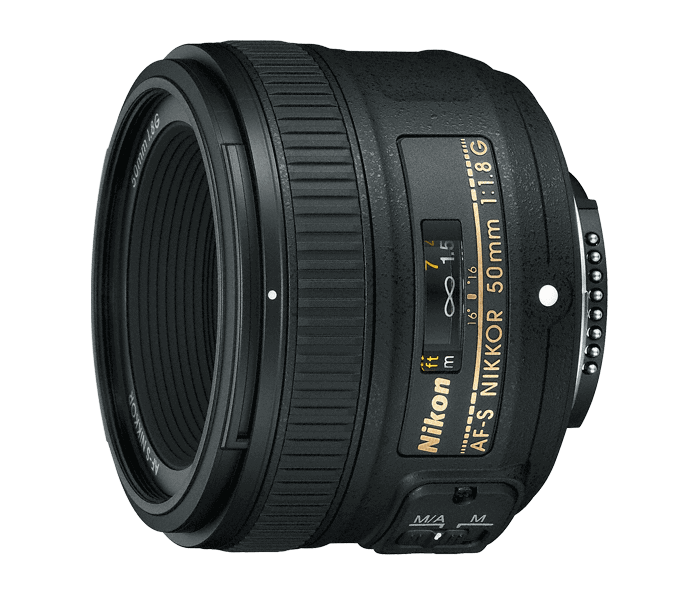
Best Nikon Lens for Portraits • Nikon AF-S NIKKOR 50mm f/1.8G
Nikon prides itself on the AF-S NIKKOR 50mm f/1.8G lens’s background blur – and they should. For its price, the NIKKOR 50mm does an excellent job of capturing light and delivering a natural depth of field.
Perfect Portrait Lenses
85mm lenses
Most professional portrait photographers swear by the fact that 85mm is the perfect lens size for portraits. What’s the biggest benefit of using a 85mm lens for portrait photography? Jordan Matter of Shutterbug says that with the 85mm at f/1.8 “You can shoot at a faster shutter speed without having to increase your ISO and therefore your shots will look sharp and not noisy.” Check out some other reasons why the 85mm is a great lens for portraits below.
7 Reasons Why an 85mm is the Perfect Lens for Portraits
Portraits taken in low-light with a 85mm lens at f/1.8 look great – a point that’s hard to refute after looking at this portrait photograph from Matter:
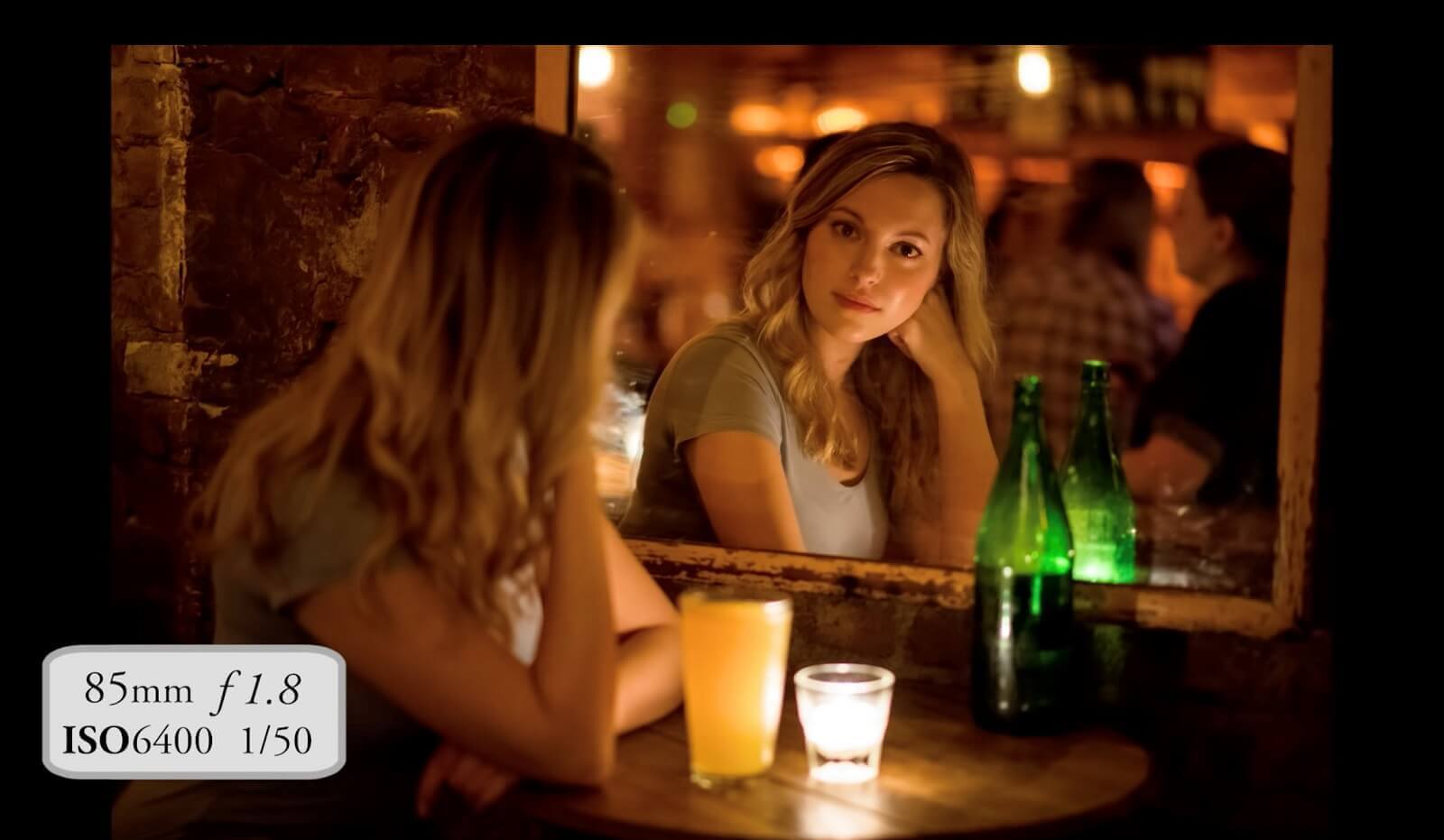
What Lens is Good for Portraits? • Low-Light Portrait by Jordan Matter
With such a shallow depth of field, you can achieve an excellent bokeh effect.
Here are some of the best 85mm lenses for portrait photography:
Canon EF 85mm f/1.8 USM – $419.99
- Focal length: 85mm
- Maximum aperture: 1:1.8
- Diagonal angle of view: 28° 30'
- Closest focusing distance: 0.85m / 2.8 ft
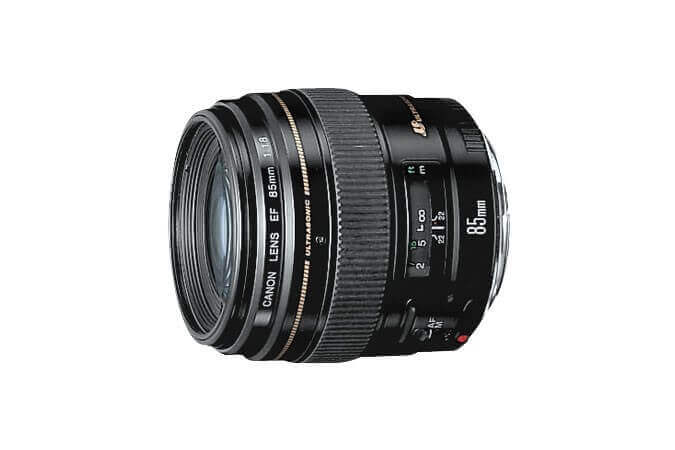
What is the Best Lens for Portraits? • Canon EF 85mm f/1.8 USM
The Canon EF 85mm f/1.8 USM lens is regarded as a classic 85mm lens. It’s an excellent option for beginner photographers and professional photographers alike.
Sony 85mm f/1.8 FE – $599.99
- Minimum Focus Distance: 2.63 ft (0.8 m)
- Maximum Magnification Ratio (X): 0.13
- Filter Diameter (MM): 67
- Weight: 13.1 oz (371 g)
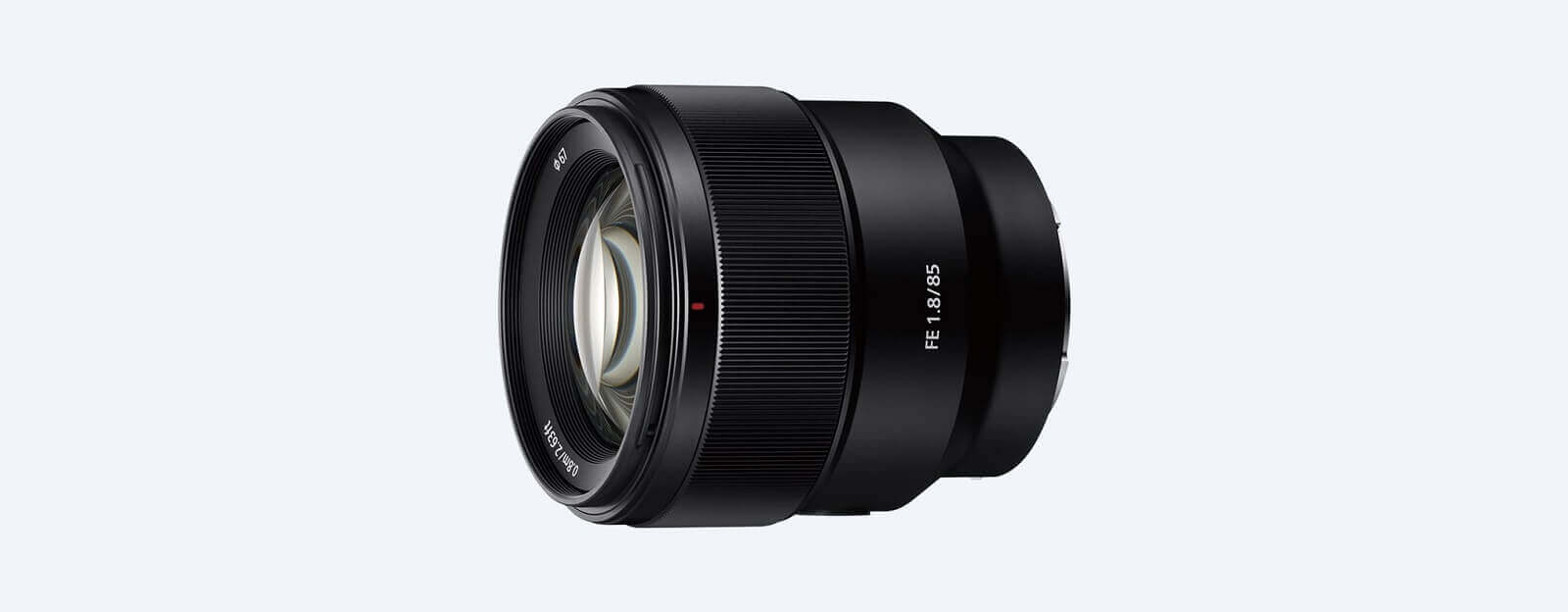
What is the Best Lens for Portraits? • The Sony FE 85mm f/1.8
The Sony FE 85mm f/1.8 reigns king in the world of 85mm lenses for its sharp image quality and compact design. Any and every Sony camera owner should consider picking up an FE 85mm lens for portrait photography.
Best Focal Length for Portraits Zoomed
70-200mm lenses
If you want to get crazy with focal length and shoot your portraits from a considerable distance, then you’re going to want a lens that’s bigger than 85mm. But like I said earlier, the general consensus is that focal lengths between 50 and 85mm are best for portrait photography. Still, 70-200m zoom lenses offer a lot of flexibility. This next video from fStoppers shows how you can use a 70-200mm lens to take awesome portraits.
How to Control Your Background with a 70-200mm Telephoto Lens
Perhaps the biggest advantage of shooting a portrait with a telephoto lens is its compression. When we take photos on telephoto lenses, the subject becomes compressed and the background appears more blurred. This effect can be achieved to an even greater degree by widening the aperture.
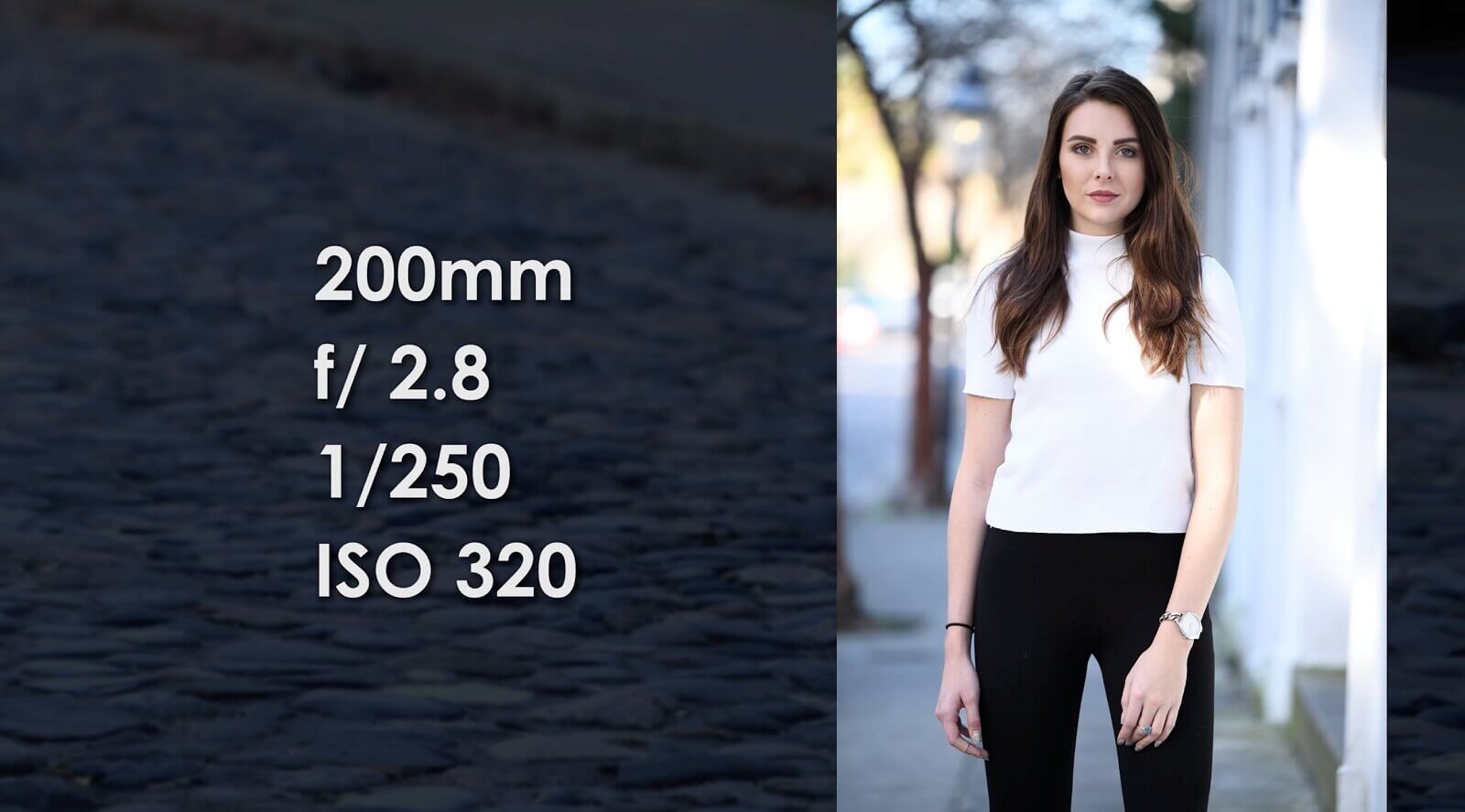
Best Lens for Full Body Portraits • 200mm Portrait Photo by Patrick Hall
As photographer Patrick Hall alludes to in the video, there’s no best focal length for portraits. Ultimately, it comes down to personal preference.
These are a couple of the best medium telephoto lenses for portraits:
Canon EF 70-200mm f/2.8L IS III USM – $2099.00
- Focal Length & Maximum Aperture: 70-200mm f/2.8
- Lens Construction: 23 elements in 19 groups
- Diagonal Angle of View: 34° - 12°
- Focus Adjustment: AF with full-time manual
- Closest Focusing Distance: 3.94 ft. / 1.2m
- Filter Size: 77mm
- Max. Diameter x Length, Weight: Φ3.5 x 7.8 in., approx. 3.17 lbs. / Φ88.8 x 199mm, approx. 1440g
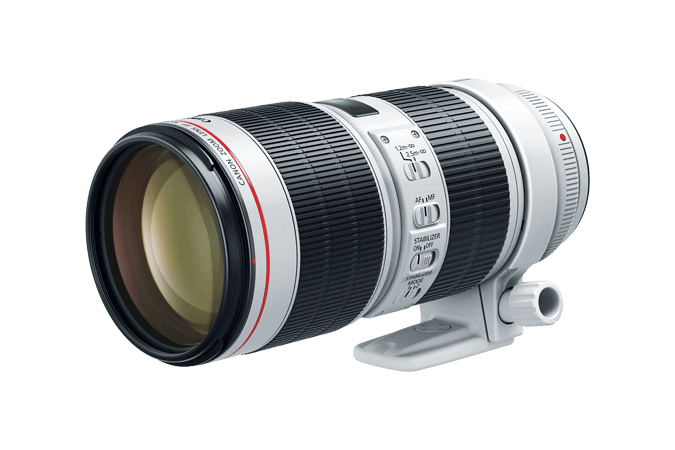
What is the Best Lens for Portraits • Canon EF 70-200mm f/2.8L IS III USM
We’ve officially entered deep (and expensive) waters with the Canon EF 70-200mm f/2.8L IS III USM. Few would argue that the EF zoom lens is anything but exceptional for its price. But if you want a brand-name zoom lens with a pretty large aperture, you’re going to need to pay some big-bucks.
Tamron SP 70-200mm F/2.8 Di VC USD G2 – ~1299.99
- Focal length: 70-200mm
- Maximum aperture: f/2.8
- Diagonal angle of view: 34°21' - 12°21' (for full-frame format), 22°33' - 7°59' (for APS-C format)
- Optical construction: 23 elements in 17 groups
- Minimum object distance: 0.95m (37.4 in)
- Maximum magnification ratio: 1:6:1
- Filter Size: φ77mm
- Maximum diameter: φ88mm
- Length: 193.8mm (7.6 in) Canon, 191.3mm (7.5 in) Nikon
- Weight: 1,500g (52.9 oz) Canon, 1,485g (52.4 oz) Nikon
- Aperture blades: 9
- Minimum aperture: f/22
- Standard accessories: Lens hood, Lens cap, Lens pouch
- Compatible mounts: Canon, Nikon, Nikon Z compatibility, Canon EOS R compatibility
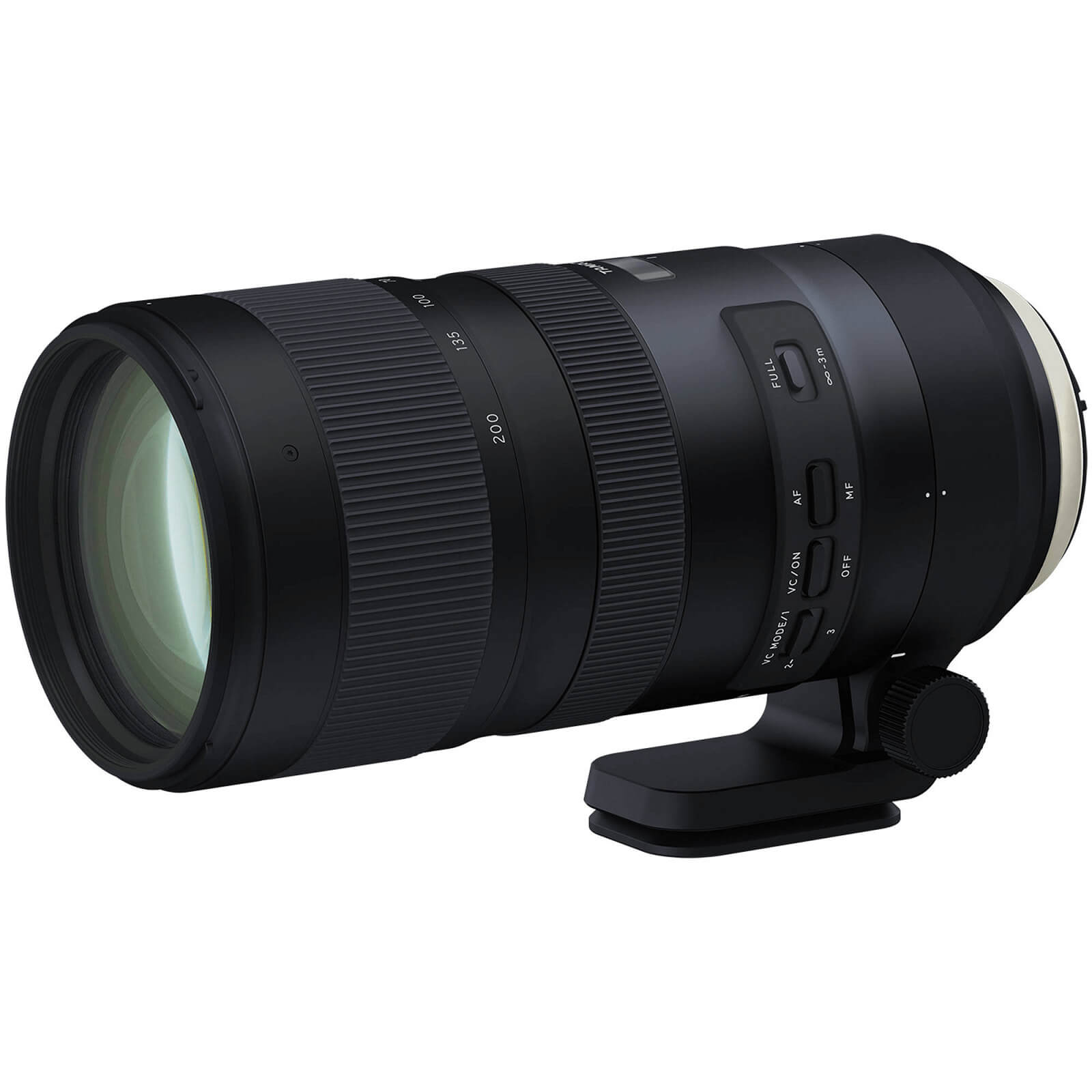
What is the Best Lens for Portraits • Tamron SP 70-200 F/2.8 Di VC USD G2
The Tamron SP 70-200 F/2.8 Di VC USD G2 is a slightly cheaper alternative to the Canon EF model. Both are 70-200mm zoom lenses and both are great options for portrait photographers.
Best Lens for Portrait Photography
What is the Best Lens for Portraits?
Now that we’ve explored a variety of different lenses, let’s answer the question: what is the best lens for portrait photography? Well, it’s certainly subjective, but most photographers would agree that 85mm lenses are the most naturally suited to portrait photography.
That doesn’t mean other lenses are bad though – quite the contrary: 35mm, 50mm, and 70-200mm lenses are all great options for portrait photographers looking to give their portraits a unique look. And as always, the lens is just one of the elements in constructing a great portrait photograph. Don’t forget to pay equal attention to framing, lighting, and all of the other elements that go into portrait photography!
UP NEXT
Black and White Portrait Photography
Want to give your portrait photograph a monochromatic look? Up next, we break down how to shoot black and white portraits, with digital and film examples. By the end, you’ll be prepared to shoot a classic looking portrait photograph that keeps the focus on light and shadow.
Up Next: Black and White Portrait Photography →
Showcase your vision with elegant shot lists and storyboards.
Create robust and customizable shot lists. Upload images to make storyboards and slideshows.
